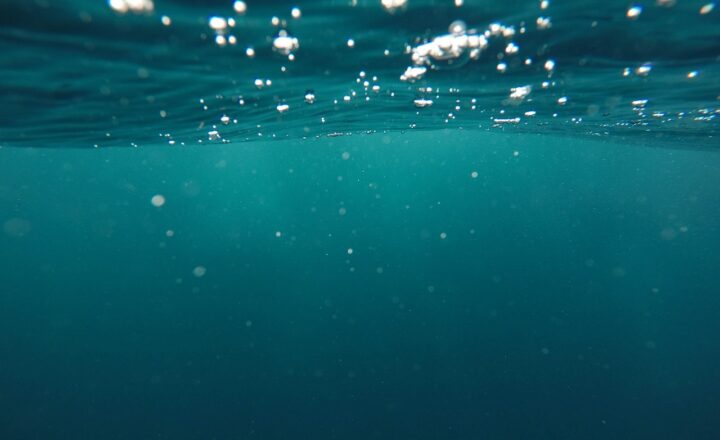The Mysteries of Deep-Sea Submersibles and How They Explore the Ocean Floor
November 11, 2024

Deep-sea exploration has always been cloaked in mystery, capturing the imaginations of scientists and adventurers alike. The ocean, covering over 70% of our planet, remains largely unexplored, with many regions still untouched by human activity. To unlock the secrets of the abyss, scientists rely on advanced technology, primarily deep-sea submersibles, which delve into the depths of the ocean to uncover its hidden gems. This article unravels the intricacies of deep-sea submersibles and their crucial role in exploring the ocean floor.
1. Understanding Deep-Sea Submersibles
Deep-sea submersibles are specialized vessels designed to operate at extreme depths where traditional manned vehicles cannot function. These technological marvels are equipped to withstand the immense pressure found underwater and are capable of traveling to the darkest, unexplored regions of the ocean.
Unlike submarines, which can navigate underwater with some operational freedom, submersibles often rely on larger support vessels for launching and recovery. They operate remotely or can be piloted from within, allowing scientists to observe and study the ocean’s depths without putting human lives at risk.
Some of the most famous models include:
- Alvin: One of the oldest manned submersibles still in operation, it has made significant discoveries, including the Titanic wreck.
- Deepsea Challenger: Designed for James Cameron’s historic solo dive to the Mariana Trench, it pushed the boundaries of deep-sea exploration.
- DSV Limiting Factor: The first submersible capable of making multiple dives to the deepest part of the ocean, the Challenger Deep, exploring its mysteries and ecosystem.
2. The Importance of Deep-Sea Exploration
Exploring the deep sea is pivotal for a variety of reasons:
- Biodiversity Discovery: The deep ocean hosts a wealth of unknown species and ecosystems that may play crucial roles in global biodiversity. Each expedition brings the possibility of discovering new life forms that could hold secrets for medical science or biotechnology.
- Climate Change Understanding: The ocean plays a significant role in regulating Earth’s climate. Understanding how deep-sea ecosystems respond to changes can provide critical insights into climate change and its global effects.
- Resource Exploration: The ocean floor contains vast reserves of minerals and potential energy resources. Exploring these areas responsibly may offer solutions for future energy needs without damaging ecosystems.
- Mapping the Ocean Floor: Accurate maps of the ocean floor enable better navigation for shipping routes, and provide essential information for marine conservation efforts and national security.
3. The Technology Behind Deep-Sea Submersibles
Deep-sea submersibles utilize advanced technology to explore the ocean floor effectively and safely:
- Pressure Resistance: One of the most significant challenges in deep-sea exploration is the immense pressure found at ocean depths. Submersibles are constructed with specially designed materials, such as titanium and specialized glass, to withstand these pressures and provide safety for the crew and sensitive instruments.
- Communication Systems: Maintaining contact with surface vessels and other teams is essential, especially when conducting remote operations. Submersibles are equipped with advanced communication systems that allow for continuous data transmission.
- Sonar and Imaging Technology: Sonar systems are crucial for navigation and mapping the ocean floor, while high-definition cameras and imaging technology capture stunning visuals of the underwater environment, aiding in research and exploration efforts.
- Robotic Arms and Sampling Tools: Many submersibles come equipped with robotic arms and specialized tools for collecting samples of water, sediment, and marine life. This allows scientists to analyze and study the various components of deep-sea ecosystems directly.
4. Notable Deep-Sea Discoveries
The journey into the ocean’s depths has resulted in groundbreaking discoveries:
- The Titanic Shipwreck: Discovered by the Alvin submersible in 1985, the Titanic remains an iconic symbol of maritime history, offering insights into engineering and human tragedy.
- Hydrothermal Vents: First identified during the exploration of the Galapagos Rift in 1977, these vents host unique ecosystems relying on chemosynthesis, fundamentally altering our understanding of where life can exist.
- New Species Exploration: Each expedition brings to light new species, from bioluminescent creatures in the abyss to bizarre organisms adapting to extreme environments. These findings challenge existing biological classifications and broaden our understanding of life on Earth.
- Historical Artifacts: Deep-sea explorations have uncovered artifacts from ancient shipwrecks and submerged cities, revealing secrets about human history and past civilizations.
5. Challenges of Deep-Sea Exploration
While the potential and discoveries are immense, deep-sea exploration comes with its challenges:
- Extreme Conditions: The deep ocean is not only dark and cold, but it is also home to unpredictable currents and geological instability, making navigation and data collection difficult.
- High Costs: Developing and operating deep-sea submersibles requires significant financial investments, often limited to governmental or large research institutions.
- Environmental Concerns: Exploration activities can pose threats to fragile marine ecosystems, urging researchers to adopt responsible and sustainable practices in their missions.
Conclusion: The Future of Deep-Sea Exploration
As technology advances, the potential for deep-sea submersibles to discover and interact with the ocean floor continues to grow. With emerging innovations in materials, robotics, and imaging technologies, the future of deep-sea exploration looks promising. By increasing our understanding of the ocean’s depths, we will not only unveil its mysteries but also enhance our knowledge of global biodiversity, climate change, and potentially untapped natural resources.
In a world where knowledge is key to preservation, the exploration of deep-sea environments stands as a remarkable reminder of the unexplored frontiers of our planet. Enabling continuous research and discovery, deep-sea submersibles represent the adventurers of our time, revealing secrets hidden beneath the waves.








